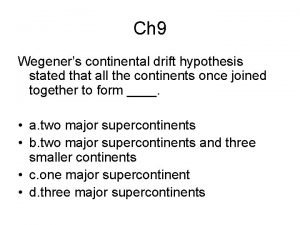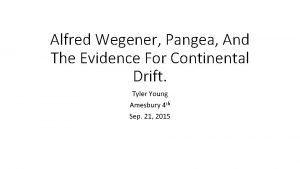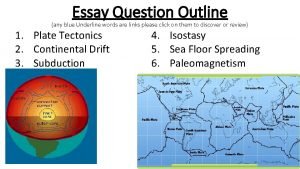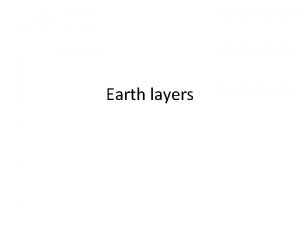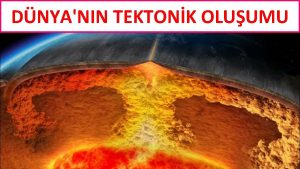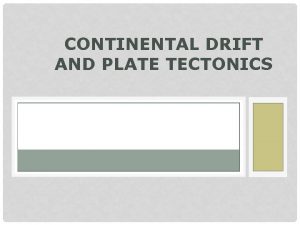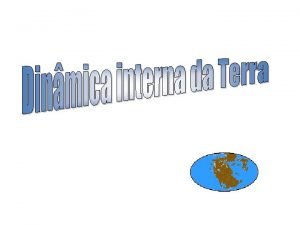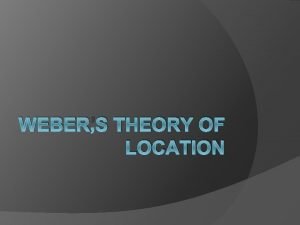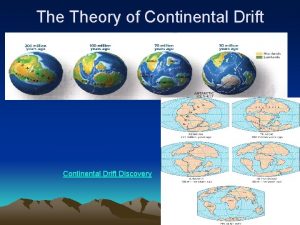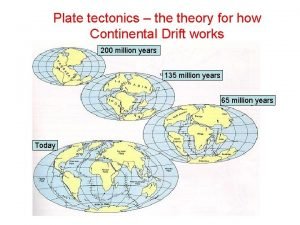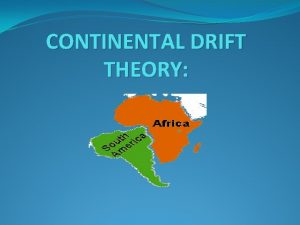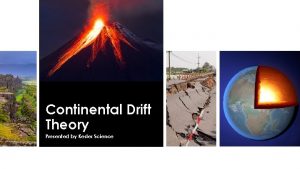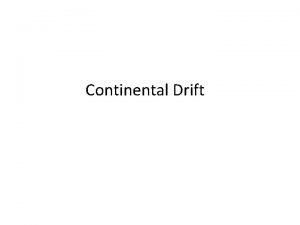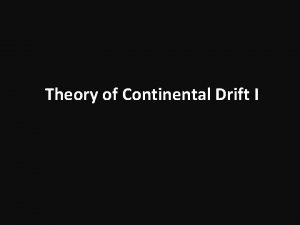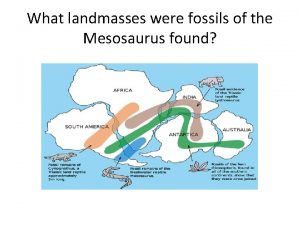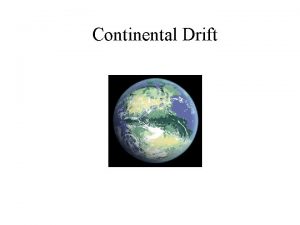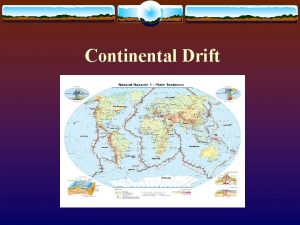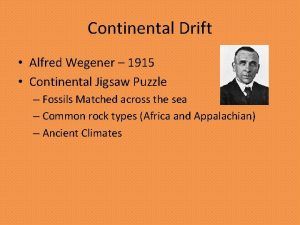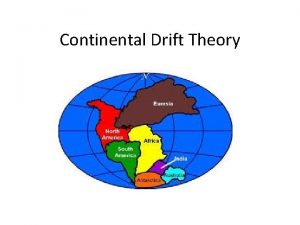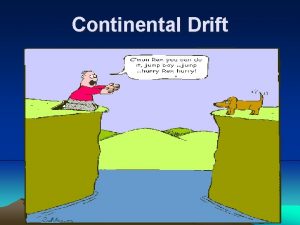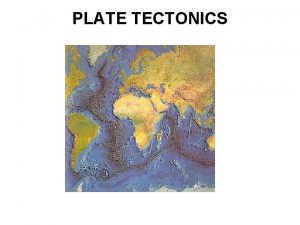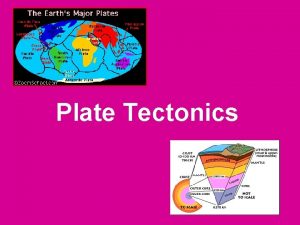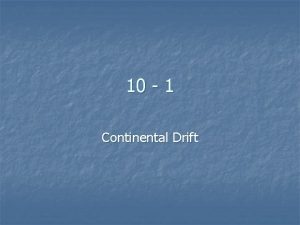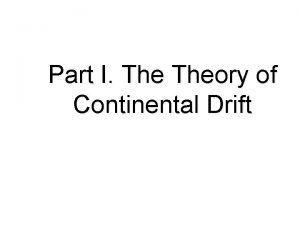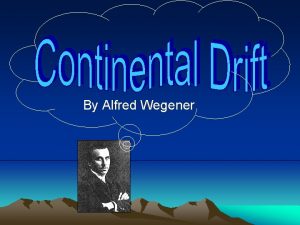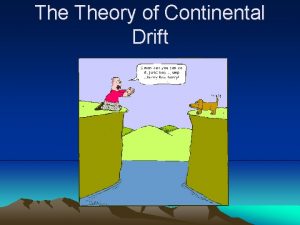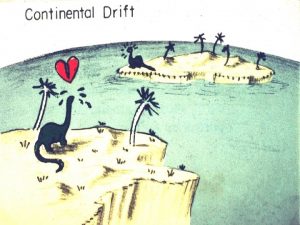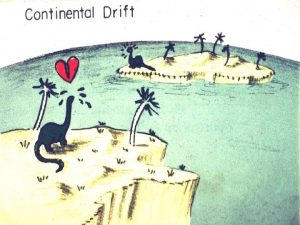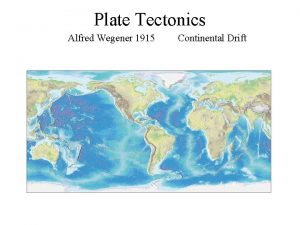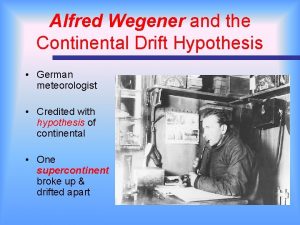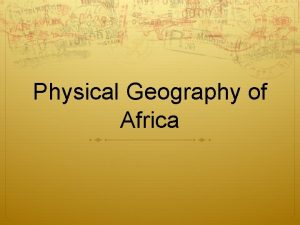Theory Of Continental Drift Alfred Wegener It is























- Slides: 23

Theory Of Continental Drift • Alfred Wegener • It is this German to whom we credit with the proposal of theory of Continental Drift.

• While pondering the similarities between the coastlines of South America and Africa, Wegener came up with an idea: • What if the continents were once all connected and just drifted over the years?

Wegener’s evidence for Continental drift • Ferns and Reptiles in many different continents • Glaciers that were then tropical forests • Same types of rocks on continents close to each other (yet separated by an ocean) • The coastlines of Africa and South America

The Flaw in Wegener’s Theory • He thought that each of the continents were a separate plate--they were just drifting on a neverchanging ocean. • Like styro-foam floating on a pool of water!!

Canadian Correction • J. Tuzo Wilson • the 1960’s Canadian scientist who resurrected Wegener’s theory after years of disbelief by the science community. • Today, we know that's false, thanks to the discovery of crustal plates. • The plates of the earth are not composed of just land; they're composed of ocean too.

Canadian Correction – cont’d • In some cases, the plates are just land, in others they're just ocean, and, in still other cases, they consist of land ocean. • They each have different boundaries and move in all different directions.


Plates of the earth p. 12

Continental Drift • refers to the movement of the more than 20 plates (9 major) due to convergent, divergent, and transform boundaries. • The continents drift at a rate of 2 inches a year. • Started 200 million years ago • Pangea (land) & Panthalasa (sea)



More about Continental Drift • our text p. 10 • watch it at: • http: //www. ucmp. berkeley. edu/geology/tectonics. html

Plate Tectonics • Tectonic plates move or float on top of the upper mantle. • However they do not float freely. • The plates are forced in specific directions by the flow of magma beneath.

Plate Tectonics – cont’d • Plates move with the flow of magma. • The magma closer to the core heats and then rises towards the surface as its density decreases. • Once the rising magma reaches the lithosphere it moves in opposite directions. • The magma forms convectional currents.

Plate Tectonics – Convection Currents

Divergent Boundaries • Tensional Forces occur where two tectonic plates are pushed apart. The tension is created as the plates move away from each other. • Ridge Zones sometimes occur where two plates move apart. The magma rises between the plates and forms a ridge. • Again caused by convectional currents in the magma

Tensional Forces – Ridge Zones This diagram above shows “Sea Floor Spreading”

Where’s the TENSION?

Convergent Boundaries • Compressional Forces occur where two tectonic plates come together. They compress against each other. • Subduction Zones sometimes occur where compressional forces result from two plates colliding and one plate slips under the other. • Again caused by convectional currents in the magma

Compressional Forces – Subduction

Where’s the Subduction / Compression?


More about Plate Tectonics • our text p. 10 - 12 • watch it at: • http: //www. pbs. org/wgbh/aso/tryit/tecto nics/intro. html
 What type of
What type of Continental drift theory and plate tectonics theory
Continental drift theory and plate tectonics theory Plate tectonics vs continental drift
Plate tectonics vs continental drift Pangea alfred wegener
Pangea alfred wegener Alfred wegener biographie
Alfred wegener biographie Picture of alfred wegener
Picture of alfred wegener Oreo tectonics
Oreo tectonics Picture of alfred wegener
Picture of alfred wegener Fixismus
Fixismus What are earth's three main layers brainpop
What are earth's three main layers brainpop Farklı kıtalarda aynı fosillerin bulunması
Farklı kıtalarda aynı fosillerin bulunması Who was alfred wegener and what did he theorize
Who was alfred wegener and what did he theorize 1912 alfred wegener
1912 alfred wegener Alfred weber location theory
Alfred weber location theory Continental drift theory
Continental drift theory Magnetic reversals
Magnetic reversals Continental drift theory notes
Continental drift theory notes Continental drift
Continental drift Kesler science plate boundaries
Kesler science plate boundaries Continental drift theory
Continental drift theory Proof of continental drift theory
Proof of continental drift theory Proof of continental drift theory
Proof of continental drift theory Mosasaurus continental drift
Mosasaurus continental drift Continental drift theory slideshare
Continental drift theory slideshare
